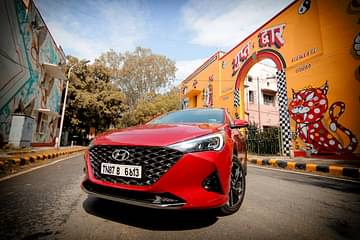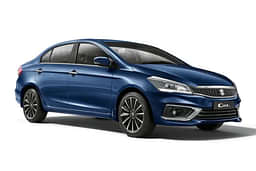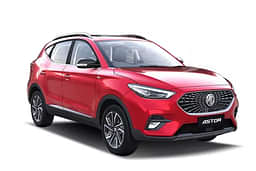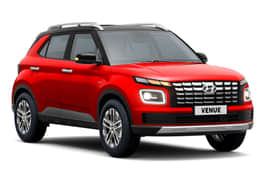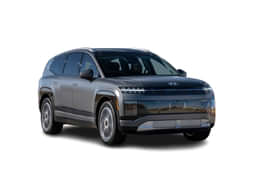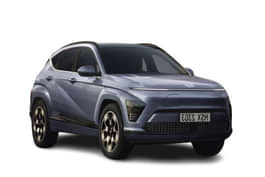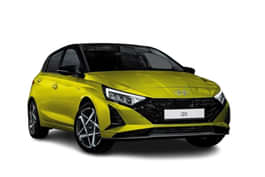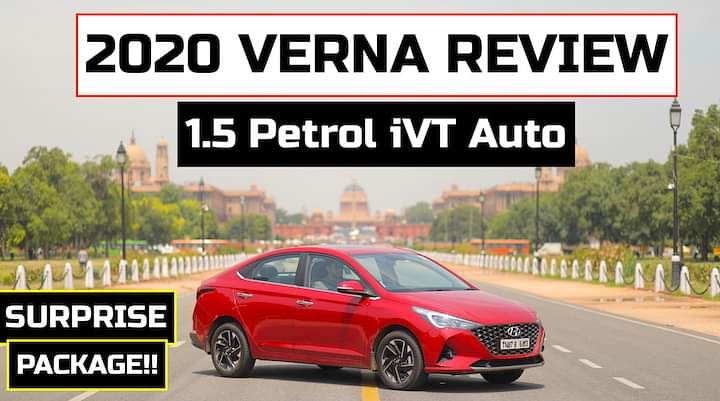
The current generation Verna was launched in 2017 and came across as an all-new product. It was made on a new platform, had increased dimensions, the same set of powerful engines and segment-leading features. However, the competition has set its foot strongly in this segment and to make sure consumers keep walking into showrooms (virtually too!), the Korean giant came up with an update that offers more than just a facelift. Hit the play button below or continue to scroll down to read our 2020 Hyundai Verna Review.
It looks better, much better
The first thing that strikes me in the new Verna is the outlandish appeal, in a good way that is. The front is bold, aggressive and loud. With the 2020 update, the Verna gets sharper headlamps, a bigger grille and a new bumper all together. Our media car in this Fiery Red colour and the kind of attention it has been getting on the roads is immense!

Side profile remains similar to the outgoing Verna but you can make out the sharper bumper design on either ends. Also, by now, you would have noticed the new alloy wheel design. These 16-inch wheels look bling and come wrapped in 195/55 R16 tyres which fill up the gaps rather well. The Verna sits low and this along with the pulled back lamps at both the ends and the sloping roof make it look coupe-ish in my opinion.
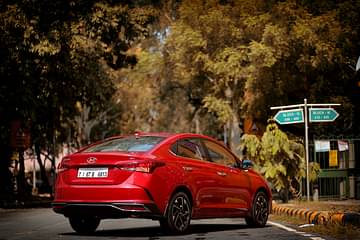
Walk towards the rear and the new bumper gets your attention as well. The LED lights continue to impress me too. Its worthy of mention that Hyundai offers a sportier rear for the turbo petrol model. If you pick this one up, you get mesh treatment at the sides of the bumper along with a dual exhaust set-up. These two factors certainly make it look more appealing!
Feature loaded interiors
Not much has changed in regards to the interiors of the new Verna. Upfront, the dual-tone treatment works well and the 20.3 cm touch-screen interface takes center stage. I must add, the audio quality is top notch and being a bass audiophile, I was more than impressed with the stock set-up. I was also pleasantly surprised to know that all the versions come with the Arkamys Premium Sound while all but the base get front tweeters. Good work there Hyundai!

This also gets me to the extensive feature list. The new City launch is still a few days away and this gives the Verna more breathing space to pat its back in terms of the generous equipment levels. Wireless charging, ventilated seats (yes, both front ones), a sunroof, hands free trunk operation (Smart Trunk) and even a full LCD speedometer console, the new Verna will pamper you as a customer. The speedometer console does look bling and gets both analogue type and digi read-outs for the speed and tachometer readings. You also get a DRVM or a driver rearview monitor to keep a track on what's following you closely in traffic.
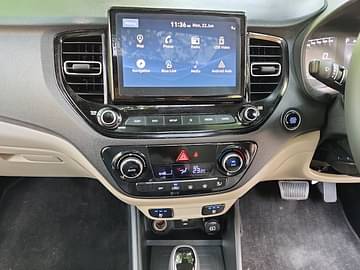
That said, there are a few elements that could have better. For example, a flat-bottom steering, a better-designed climate control console and smoother operation for the central arm-rest. Also, if I may add, though wireless charging is a welcome feature, it might not be big enough to accommodate larger phones.
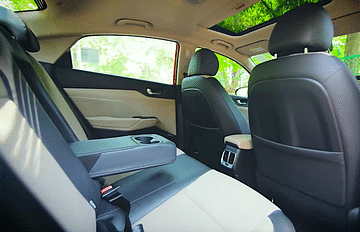
Getting into the rear seats is, you realise these are set a bit too low. However, this helps in terms of aiding headroom inspite of a low overall height. The seats themselves feel nice and thanks to the sunroof, you do get a sense of airiness. I like the rear sunblind, a very thoughtful feature added that will of use throughout the year in India. Rear vents, charging outlet, seatback pockets, and an arm-rest complete the package here. If you are primarily looking for a spacious chauffeur driven car, the City or the Ciaz might be your best bet. That said, if you have a driver under 5'10" up front, the rear has enough space for the tallest of adults. Boot space of the Verna remains unchanged but at 480 litres, it offers enough space for luggage needs.
Drives surprisingly well
When we were told that our test car would be the 1.5 petrol iVT, I was a bit disappointed. And why not as I was looking forward to the 120 PS turbo petrol model that comes with a DCT gearbox. However, within hours of driving the iVT, I was pleasantly surprised and not complaining at all. You see, a CVT automatic makes the best use of an engine when it comes to puttering around in traffic and this case, the magic seems to work very well.
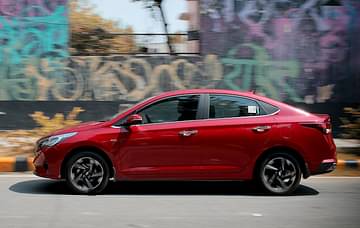
For starters, this new 1.5 petrol motor is smooth (also does duties on other Kia / Hyundai models) and because we have CVT in here, you don't feel any gear changes at all. Even though this engine makes about 7 PS less and an equal amount of torque less as compared to the older 1.6 petrol, you do not feel the same on the move. Part throttle response is terrific and the superb insulation levels further make the cabin a cocoon for you to chill as the world goes by.
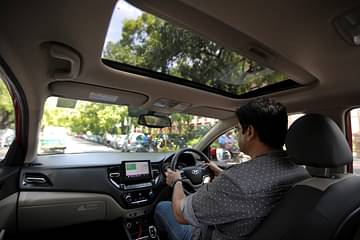
That said, pedal to metal, the rubber band effect takes over but you can control the shifts thanks to pedal shifters in here. Flat out, the Verna 1.5 iVT is a quick sedan but the 1.0 DCT will be faster I say. We did a quick 0-125 km/h run and the same can be seen below:
In terms of fuel consumption, we got an easy 12-13 kmpl in New Delhi with the air-con running. The beauty of the CVT is that when you lift off the right pedal slightly while coming down a fly-over, it sort of starts coasting and there is no engine braking to slow you down. Ditto when you see a red light ahead at a distance and want to get off the accelerator pedal. These things go a long way in ensuring better fuel economy. For those looking at engine braking on winding roads, you can use the paddle shifters to downshift and induce engine braking.
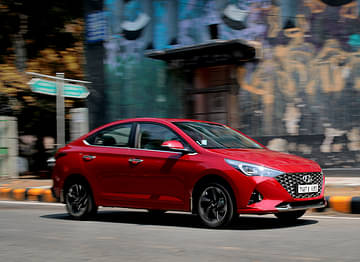
We didn't have a chance to sample the other engine versions - but this will surely be done in due course of time. Remember, the updated Verna gets a new set of units. The 1.5 diesel is the same unit we see on the new Creta and the Seltos. Likewise, the 1.0 turbo petrol also does duties in the Aura / NIOS (in a different state of tune) and in the Venue. It will also be used for the upcoming i20 and the Kia Sonet.
Continues to ride well!
Over the years, Hyundai has worked a lot on the dynamics of the Verna. I remember driving the older version years back and feeling nervous at higher speeds in the way the rear responded over undulations. Though it rode well in terms of comfort, bottoming out of the suspension was common with a full load of passengers. Fast forward to 2020 and the Verna now feels so much better. For starters, the light steering remains and is a delight to use at lower speeds. The suspension set-up also aims to remove imperfections from filtering into the cabin. At higher speeds, its easy to target a line and get the Verna to behave the way you want it to. Yes, old school petrol heads will anyway vouch for hydraulic steering but let's admit, we don't always drive like a wannabe Michael or Lewis right?
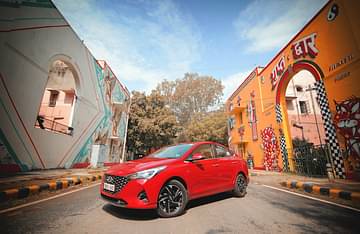
Though we had the car with us for just a few days for this 2020 Hyundai Verna review, I managed to sneak in a few performance runs. During these, dropping the anchors from higher speeds did not result in any unwanted nervous moments at all. Safe to say this will be a great long-distance companion.
2020 Hyundai Verna review - Verdict
Prices start at Rs 9.3 lakh (ex-showroom) for the updated range and this is for the 1.5 petrol manual. The one you see here can be yours for Rs 13.8 lakh and comes packed with all the bells and whistles. That said, the value pick is the SX iVT that saves you about Rs 2 lakh and yet has an extensive feature list. Add in the variable warranty package, the updated design, a very handy CVT and the new Verna seems to tick all the right boxes. Apart from space at the back I agree. What are your thoughts? Share them with us in our Whatsapp Group!
